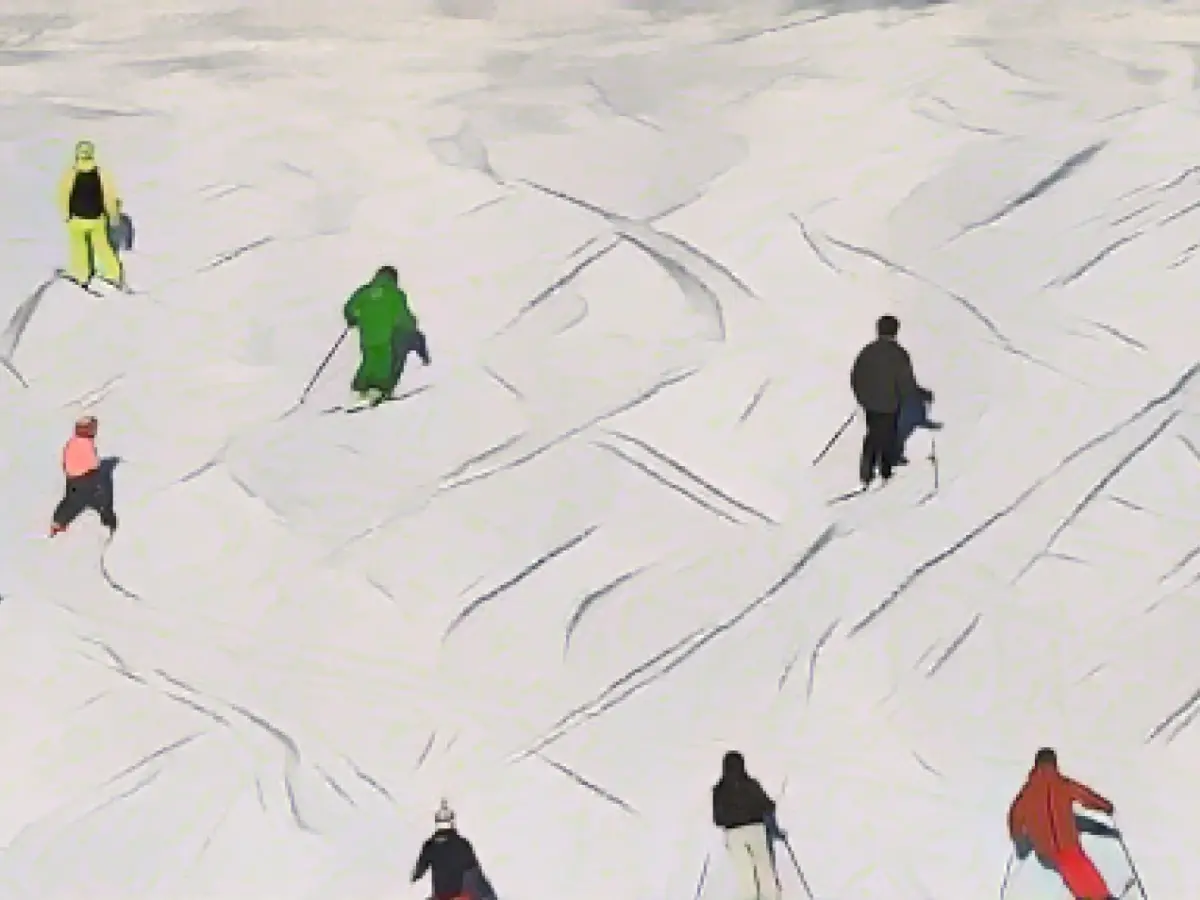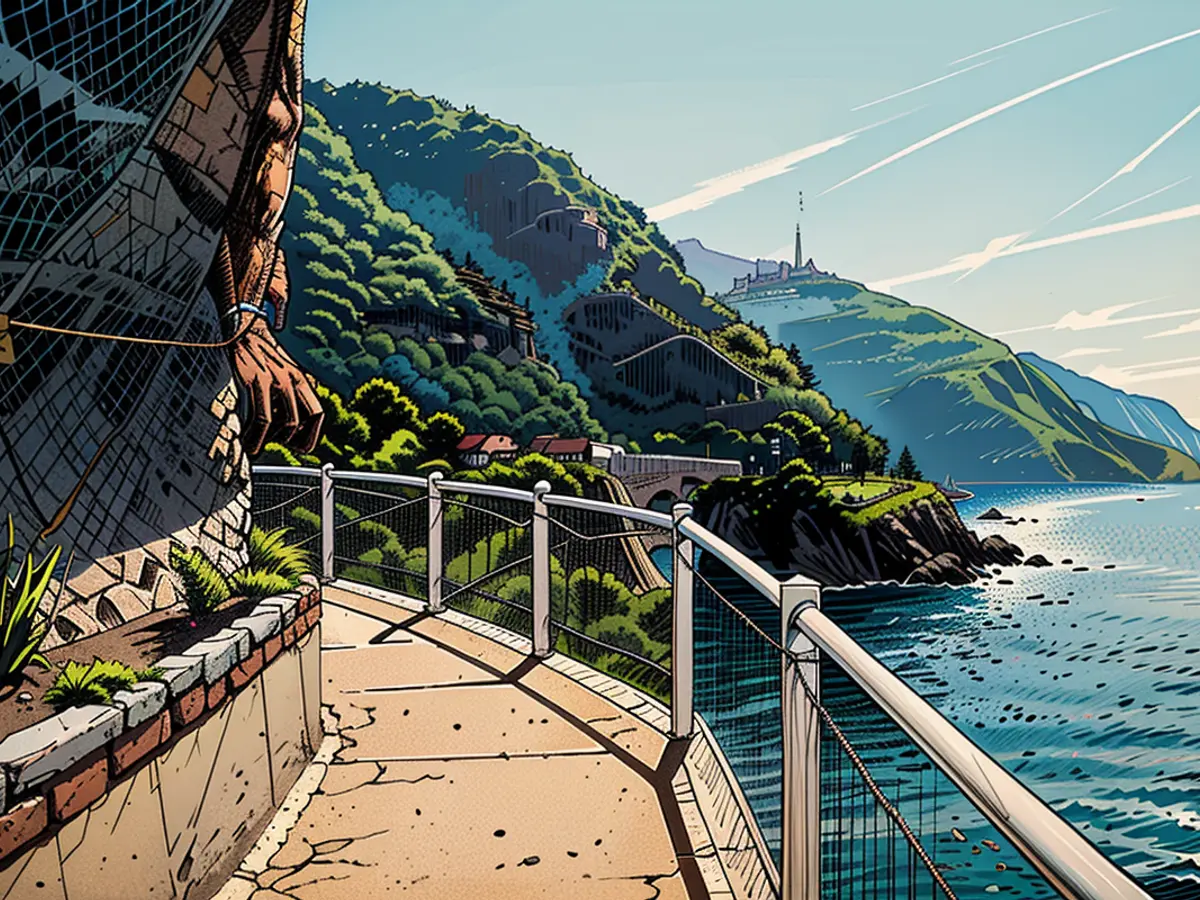Climate - Lack of snow also opens up new opportunities for winter tourism
Despite rising temperatures and decreasing amounts of snow, Alpine winter holiday resorts are not threatened with a premature end to their business in the coming years.
The vast majority of ski resorts will be able to continue operating with the help of snow cannons despite advancing climate change, and other forms of winter tourism are also gaining in importance. This is indicated by both scientific studies and assessments from the vacation industry.
"It's horror stories that we will no longer have winter tourism," says Munich-based tourism researcher Jürgen Schmude. "Winter sports tourism will become less important, but winter tourism as such will not."
Comparable number of bookings
Photos of artificially snow-covered slopes in an otherwise bleak brown landscape give the impression that many ski resorts are on the verge of closing due to a lack of snow. In fact, there is less snow in the Alps today than there was a few decades ago.
In Austria - on average across the country and at all altitudes - there is now 40 days less snow on average than in 1961, according to a research project led by the Central Institute for Meteorology and Geodynamics (ZAMG) in Innsbruck in 2022. This is most noticeable at altitudes below 1500 meters.
The past winter of 2022/23 was so bleak that the local ski resort in Lenggries, Bavaria, had to temporarily shut down in January due to a lack of snow. Nevertheless, the evidence does not suggest that inflation, crisis sentiment or fear of a lack of snow will deter holidaymakers.
Oberstdorf reported a similar number of bookings for the turn of the year as last year, and more for January and February. Other Allgäu winter holiday resorts such as Bad Hindelang, Füssen and Oberstaufen are reporting similar figures.
"Overall, we are currently quite satisfied with the booking situation," says Bernhard Joachim, Managing Director of the Allgäu/Bavarian-Swabian Tourism Association. However, a trend that has been observed for years is that guests are booking shorter stays.
Winners of climate change
A good 200 kilometers further south, hoteliers in St. Moritz and the rest of the Engadin are also reporting a very good booking situation for the upcoming festive season, according to a spokesperson for Engadin Tourismus.
"You always have to look at the individual case, but we will probably see a spatial concentration process in larger and higher-lying resorts, while it will be difficult for lower-lying ski resorts," says tourism researcher Schmude.
This has been observable for some time: many small and very small ski resorts have ceased operations in recent years. In Austria in particular, however, the operators of larger cable cars have invested large sums in lifts, gondolas and snowmaking. In some places, gigantic ski areas have been created through mergers. On the Arlberg, for example, there are now over 300 kilometers of slopes.
"There are even winners from climate change. We have more precipitation in winter, and if it falls high enough, that means more snow," says tourism researcher Schmude.
"The unfortunate thing is that these areas are not in Germany, but in France or Switzerland, and even high-altitude Austrian ski resorts won't have the same problem."
Prices reach record highs
In August of this year, an international group of scientists published a much-noticed study according to which climate change is exacerbating the problems of ski resorts - both in and outside the Alps - with snow, water supply and energy consumption.
Without the help of artificial snow, 53 percent of the 2,234 ski resorts analyzed would run a very high risk of running out of snow if temperatures were to rise by 2 degrees Celsius. For the Alps, however, the figures are less dramatic.
"Assuming that 50 percent of all ski resorts have snowmaking capability, 3 percent of the 294 Austrian ski resorts analyzed have a very high snow supply risk at plus 2 degrees Celsius," says Judith Köberl from Joanneum Graz, one of the authors. "For the Alps as a whole, the proportion at plus 2 degrees amounts to 9 percent of the 915 ski resorts considered."
In fact, many ski resorts already cover more than 50 percent of their slopes with snow. The price for this is higher costs for machinery and energy consumption, which are passed on to guests in the form of higher prices.
This winter, prices are reaching record highs. An example from Bavaria: an adult day ticket in the Garmisch ski area below the Zugspitze costs 60.50 euros.
Winter guests traditionally more profitable
The tourism industry itself is struggling with rising costs, but winter guests are traditionally far more profitable than summer holidaymakers in the Alps. "You need about two to three hikers to replace one skier," says scientist Schmude. "But that quickly brings us back to the discussion about "overtourism" if you imagine replacing 10,000 skiers with 20,000 hikers."
A third factor that will have a long-term impact is demographic change. The ageing population not only means a lack of skilled workers, but also potentially fewer guests.
However, the winter sports resorts have taken precautions in this respect: by recruiting more young people. Since 1980, the number of snow sports instructors for skiing, snowboarding and cross-country skiing in Austria has doubled from around 9,000 to 18,000. This is according to Christian Abenthung, Secretary General of the Austrian Ski School Association.
Unlike in the 1960s and 1970s, the vast majority of ski students are no longer adults, but children. The Tyrolean ski schools alone now teach around 800,000 guests per season, of which around 500,000 are children. Not all of them, but many will still enjoy winter vacations as adults - at least that is the hope in the resorts.
Read also:
- Why there is still no EU funding for green Saar steel
- 3 billion Saar Fund is unconstitutional
- Abrupt end to e-car subsidies
- The chemical industry has little confidence
Despite concerns about climate change causing a lack of snow, winter tourism in Alpine resorts is not expected to decline significantly. Jürgen Schmude, a Munich-based tourism researcher, believes winter sports tourism will become less important, but winter tourism as a whole will continue. Despite less snow in the Alps today than decades ago, photos of ski resorts without snow can give the impression they're struggling. In Austria, there's an average of 40 fewer snowy days annually at all altitudes than in 1961, as highlighted by a ZAMG research project.
Even in dry winters, ski resorts manage with snow cannons and alternative winter sports gain prominence. The past winter in Lenggries, Bavaria, saw temporary closure due to lack of snow, yet booking numbers remained steady in other Bavarian and Allgäu resorts like Oberstdorf. Winter holidays remain a prosperous sector, with guests booking shorter stays instead of cancelling.
Resorts in higher, more substantial locations in France, Switzerland, and even Austrian high-altitude resorts have more snow, creating 'winners' of climate change for these regions. However, lower-lying ski resorts may struggle. Climate change poses challenges not only for ski resorts but also influences weather, creating an image problem that tourism agencies must tackle.
Inflation, economic downturns, and fears of inadequate snow are unlikely to deter holiday-goers. The 2022/23 winter saw Oberstdorf and other Allgäu winter holiday resorts report similar bookings as before, justified by Bernhard Joachim, Managing Director of the Allgäu/Bavarian-Swabian Tourism Association. Shorter stays by tourists represent a trend observed for years.
Climate change also influences water availability and energy consumption in ski resorts, according to a 2022 study. Without artificial snow, 53% of analyzed ski resorts face high risk of running out of snow if temperatures rise by 2 degrees Celsius. However, this risk is lower in German, French, and Swiss Alpine ski resorts, with Austria having just 3% of analyzed resorts at high risk.
The tourism industry acknowledges these concerns while recognizing winter guests' higher profitability. Rising costs challenge the industry, yet winter guests remain more profitable than summer visitors. Demographic changes, particularly an aging population, may lead to a shortage of skilled workers and guests in the future. In response, ski resorts are actively recruiting more young staff in winter sports instruction, specifically focusing on children.
The increase in young ski instructors allows resorts to provide more beginner lessons, which may contribute to maintaining and expanding the customer base in the future. Resorts hope that by encouraging a love of winter sports in childhood, they can retain many of these guests as adults.
Source: www.stern.de







